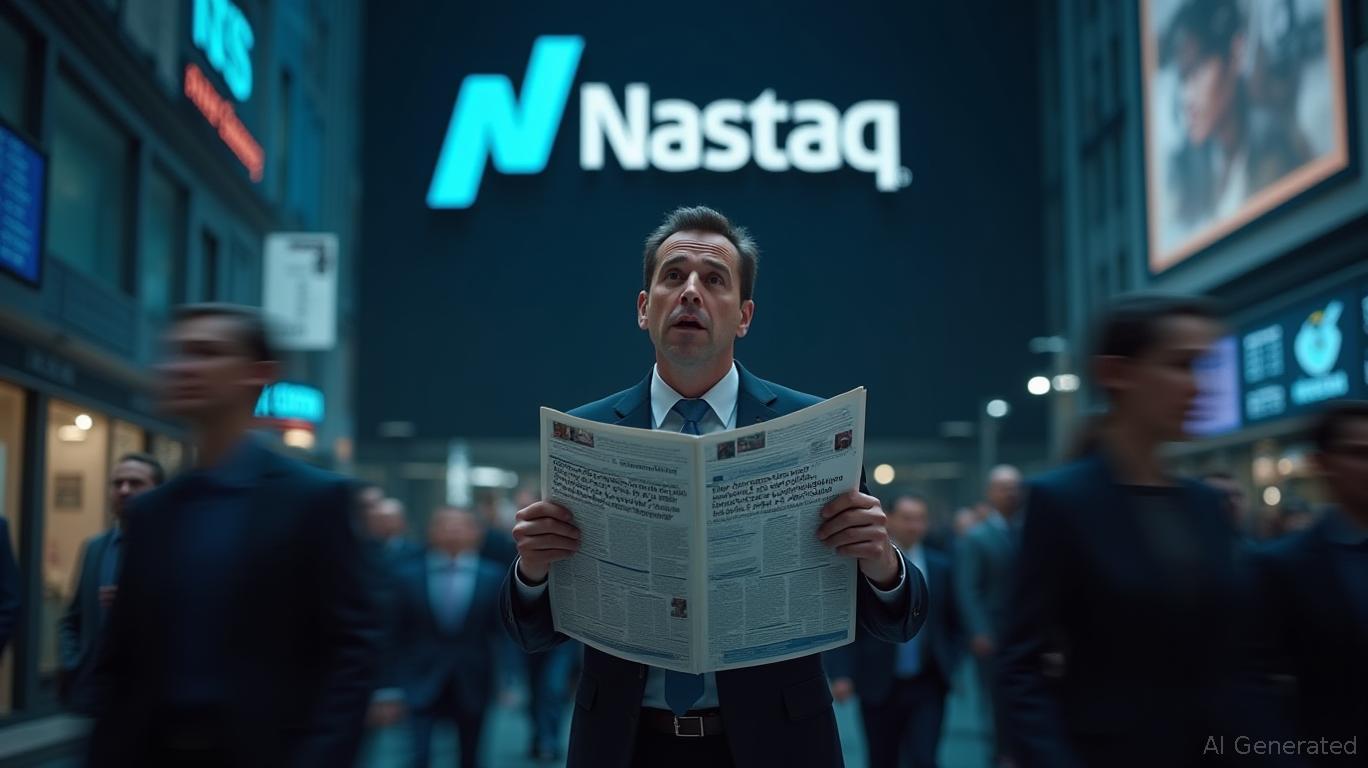Onconetix's 1-for-85 Reverse Split: A Last Chance for Survival or a Trap for Speculators?
Onconetix, Inc. (NASDAQ: ONCO) has embarked on a desperate bid to avoid delisting with its 1-for-85 reverse stock split, effective June 13, 2025. This extreme measure, which slashes shares from 44.4 million to 521,863, aims to lift its critically depressed stock above Nasdaq's $1 minimum bid price requirement. But beneath the technical fix lies a company drowning in debt, regulatory failures, and a merger that cedes control to a partner. Is this a lifeline or a landmine? Let's dissect the mechanics, financials, and strategic risks.

The Mechanics of the Reverse Split: A Band-Aid, Not a Cure
The 1-for-85 split artificially inflates the stock price by multiplying the pre-split closing price (June 12, 2025: $0.0663) by 85, resulting in a post-split price of $5.26. This is a textbook example of a “technical fix” to meet listing requirements. However, the split does nothing to address Onconetix's core issues:
- Debt Overhang: $75 million in liabilities, with a current ratio of .05 (cash insufficient to cover short-term debts).
- Regulatory Failures: Missed Q1 2025 filings triggered delisting warnings, and Nasdaq's pending hearing could still boot the stock.
- Fractional Share Dilution: Holders of less than 85 pre-split shares receive cash, reducing liquidity and ownership stakes.
Financial Distress Signals: Beyond the Split
Onconetix's financials paint a dire picture:
- Negative EBITDA: -$7.4 million over the past year, reflecting operational losses.
- Minimal Liquidity: No disclosed cash reserves to fund ongoing operations.
- Missed Milestones: Procrastination on its FDA-approved ENTADFI drug's commercialization and delays in Proclarix's U.S. licensing deal with Labcorp.
The reverse split's temporary price boost masks these realities. Without a turnaround in cash flow or a liquidity injection, the company risks another slide below $1 post-split.
The Ocuvex Merger: A Lifeline or a Death Spiral?
Onconetix's non-binding merger with Ocuvex Therapeutics—where Ocuvex shareholders would own 90% of the combined entity—is a gamble with high risks:
- Control Loss: Onconetix's existing shareholders would be diluted to minority status, giving Ocuvex control over strategic decisions.
- Execution Hurdles: Regulatory approvals (CFIUS, Nasdaq change-of-control) and financing remain unsecured.
- Valuation Concerns: Ocuvex's valuation premium implies Onconetix's assets are worth less than its debt, a red flag for investors.
Technical Analysis: Volatility and Liquidity Traps
Technically, the reverse split creates a high-risk, low-liquidity environment:
- Ultra-Low Float: 521,863 shares post-split make the stock vulnerable to price swings from small trades.
- Historical Volatility: A -95.09% return on a speculative strategy (buying on earnings dates, holding 30 days) since 2020 underscores extreme instability.
- Short-Term Rally Risk: The post-split price may attract short-term traders, but institutional investors are unlikely to engage given the structural risks.
Investment Considerations: Avoid, Gamble, or Walk Away?
For Most Investors: Avoid
Onconetix's combination of financial distress, regulatory risks, and merger uncertainties makes it a high-risk, low-reward bet. The reverse split is a temporary fix that does not resolve the company's core issues.
For Aggressive Speculators: A Tiny, Risk-Capped Bet
A speculative position could be considered only if:
- You allocate less than 1% of your portfolio.
- You set a strict stop-loss at 50% of the post-split price (e.g., $2.63).
- You monitor catalysts like Proclarix's FDA approval (potential timeline: 2026) or Ocuvex merger progress.
Conclusion: A Gamble with Long Odds
Onconetix's 1-for-85 reverse split is a last-ditch effort to delay delisting, but it fails to address systemic financial, operational, and governance flaws. While the stock may briefly trade above $1 post-split, investors should proceed with caution:
- Avoid: For all but the most risk-tolerant traders.
- Speculate Sparingly: Only if you're willing to bet on a Proclarix FDA approval or Ocuvex merger execution—both of which have high failure probabilities.
The writing is on the wall: Onconetix's survival hinges on miracles. Most investors are better off watching from the sidelines.
Disclaimer: This analysis is for informational purposes only. Consult a financial advisor before making investment decisions.

Comments
No comments yet